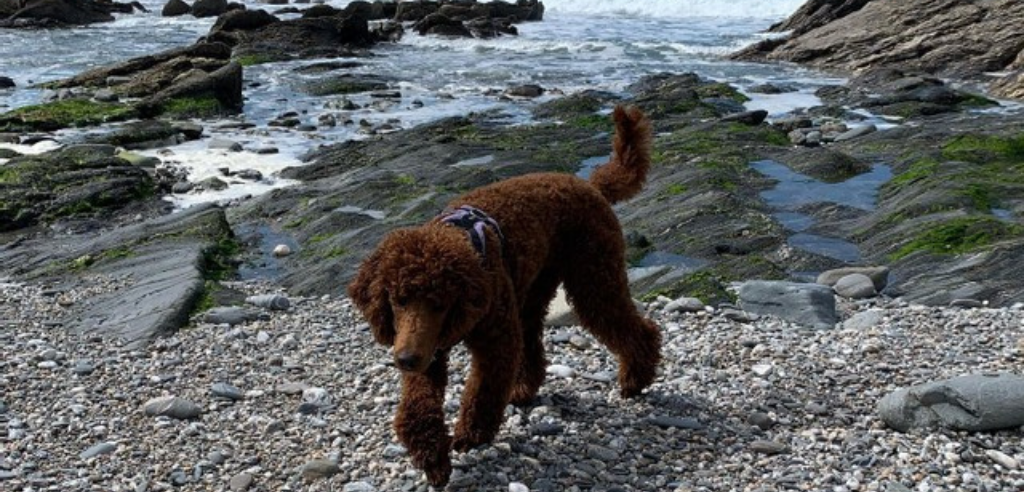Everyone loves a trip to the beach, especially our dogs, who love nothing more than a splash in the waves and digging in the sand.
Whilst there’s plenty of fun to be had, the beach can also be dangerous for our dogs, with plenty of hazards that can quickly turn a fun day out into a pretty unpleasant one.
That’s why is why we’ve put together some tips to ensure everyone has great fun the next time you have a trip to the beach!
Before you travel
Before you head to the beach, make sure you check your dog is allowed to come along as a lot of beaches have restrictions, like dogs only being allowed on beaches during certain months of the year. You can check online before you head out or by look out for guidance signs when you arrive.

Sea swimming
Swimming is a great exercise for dog and there’s nothing better than a dip in the cool waters on a hot summer day.
To our pups the sea is like one big paddling pool, but it can be very unpredictable. There are lots of riptides, strong currents and undertows even when it looks relatively calm on the surface. Stick to the shallows or keep your dog out of the water if it looks unsettled or if the tide is turning.
Not all dogs are naturally strong swimmers and can easily get overwhelmed by the waves, so never let them swim unattended or go out too deep.
Dogs can also struggle to swim in very cold waters so don’t let them in the water if it feels too cold.
Finally, remember to look out for warning signs saying not to swim in the sea or flags telling you to only swim in a specific area.

Hot weather warning
Us humans love basking in the hot sun but for our dogs it can be pretty miserable and even potentially life threatening! If the temperatures are very high, consider leaving your dog at home or visiting the beach in the early morning or in the evening when it’s a bit cooler.
On a hot summer day, sand can heat up to very high temperatures and can cause injury to your dog’s sensitive paws. Test the temperature of the sand with your hand – if it’s too hot for you to hold your bare hand on the sand for 10 seconds, it’s too hot for your pup’s paws.
Provide your dog with a blanket to sit on so they’re not sat on the hot, burning sand, and bring shade to lie under so they can escape from the sun when they need too.
Bring plenty of water to ensure your dog is well hydrated so they aren’t tempted to try drinking the salty sea water.
Heatstroke can be fatal so remember these key symptoms:
- Excessive panting
- Dry gums that become pale
- Increased salivation
- Erratic or rapid pulse
- Confusion
- Weakness
- Vomiting and diarrhoea
If you suspect your dog is suffering from heatstroke, move them into a shady spot, help the drink tepid water and seek the advice of a vet ASAP.

Watch out for hidden objects
You never know what might be lurking under the sand; broken glass, shells, sharp stones and other people’s litter can all cause damage to your dog’s paws if stepped on accidently.
Make sure you pack a first aid kit and know some doggy first aid in case of injuries.
Post beach
Nobody likes that feeling of sand stuck between their toes, and it’s the same for our dogs. Before you leave the beach or as soon as you get home, rinse off their paw pads with fresh water and check for any clumps of sand stuck in their fur.
Once you’re back home and your pup is snoozing after zooming around the beach, spend a few minutes giving their Pawfit tracker a clean to rinse off salt water which can cause corrosion and to ensure there’s no sand stuck in the speaker holes.

We’d love to see pictures of you and your dog enjoying the beach this summer – send them to us at PawfitPals@Pawfit.com or tag us on social, @Pawfit_Tracker on Instagram



